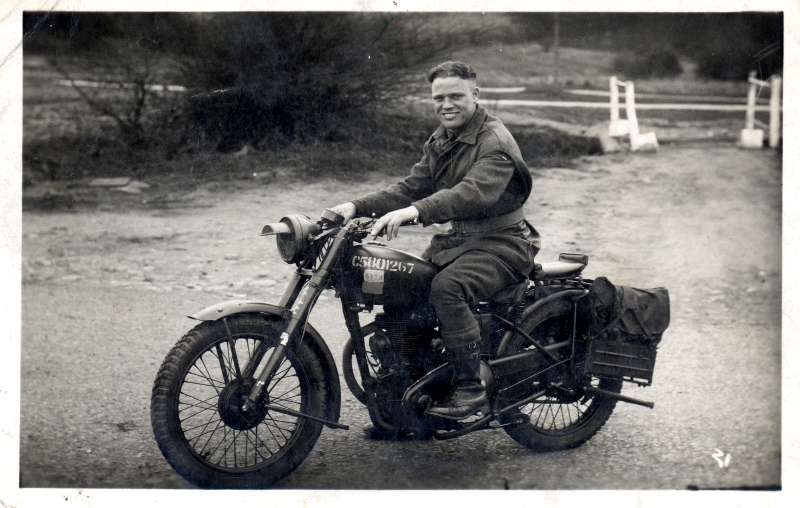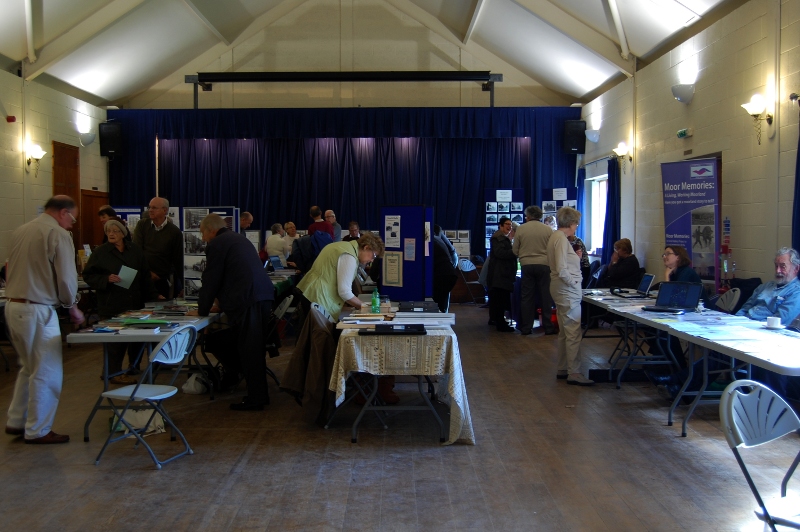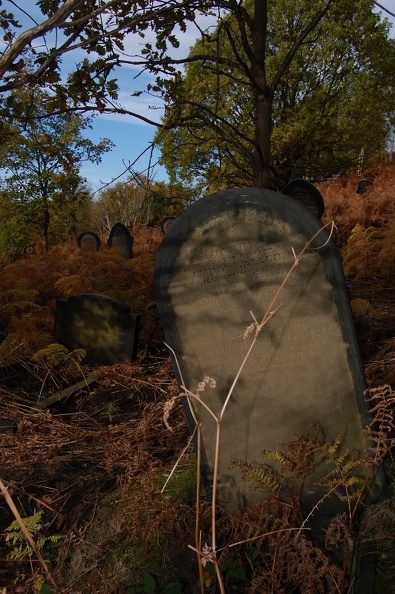Headstone left - Albert Ashforth, Harry Renwick, Frank Renwick
Headstone right - Harry, Emily and George Waller
Last Sunday, during my visit to the Family and Local History Day at Bradfield, I chatted with a couple of representatives from Friends of Wardsend Cemetery. I was already aware of their forthcoming tour of Wardsend Cemetery and confirming this would probably be the final tour of the year, I promised myself to try and make time to attend.
After a few days of rather poor weather I woke early Saturday to find a gloriously sunny morning. Grabbing my camera and walking boots I set off to Sheffield, travelling via Bradfield in order to admire the outstanding autumnal colours of Langsett, Midhope and Broomhead moors.
I arrived in Sheffield a little early so with time to spare I decided to take a walk through Hillsborough Park, something I have not done for well over 20 years.
The Friends of Wardsend Cemetery website advises to travel by way of Livesey Street. Not being sure which was Livesey Street I cast my mind back nearly 50 years and took the only route I know of from Owlerton to the cemetery, this is the route we took when we would cycle down to what we called 'the meadows'. Here we would play at 'dirt tracking' i.e. cycling at high speed over waste land near the river, then jamming on the brakes, including our feet, and sliding to a halt. This created huge clouds of dust and of course a great loss of rubber tread and leather sole, not that we cared! Of course the one with the longest skid trail went off with a greatly inflated ego and more often that not, a few cuts and bruises.
This was in fact Livesey Street. The old stone arched bridge that had been washed away in the floods of 2007 has been replaced with a much inferior modern bridge, totally out of keeping with the character of the Victorian cemetery. Still at least now we can cross the river.
I could see a group of people standing the other side of the river, a couple of whom I recognised from the Friends of Wardsend Cemetery stand at the Family and Local History Day the previous week. So along with about 15 others, I set off through the mud to a place I had not visited in over 50 years.
The guides were very knowledgeable and enthusiastic and considering the state of the cemetery fairly essential. Since the lower cemetery is now woodland, with ivy, rhododendron and Japanese knotweed attempting to cover everything in sight, it is not easy to find one's way around the various sections.
Eventually we made our way over the railway to the newer section of the cemetery. Here bracken replaces trees, and the gloom of the lower cemetery lifts a little.
One of our guides drew our attention to a couple of graves with history attached. One of these graves is that of George Waller, a local gentleman killed in the Balby railway disaster of 1947. Below is a British Pathé newsreel showing the aftermath of the disaster:
18 Die, 70 Hurt In Doncaster Train Crash
Since we were about to return to our starting point I decided to take a few photographs of George Waller's headstone. As I did so, I scanned some of the surrounding headstones. Imagine my surprise when my eyes settled on a headstone just a couple of metres away and I saw the name 'RENWICK'. Closer inspection also revealed the name of 'ALBERT ASHFORTH'. Both these are family names, indeed I have mentioned them several times on this website.
Albert Ashforth, Harry Renwick, Frank Renwick
Well to say I was staggered by my good fortune is very much an understatement. Early in our tour I had come to the conclusion that trying to find a family grave in these conditions and in the time available was going to be nigh on impossible, but here was one of them.
The full inscription reads:
In Loving Memory Of
Albert Ashforth,
Died March 13th 1912, Aged 34 Years.
Also Harry Renwick,
Died March 25th 1934, Aged 24 Years.
Also Frank Renwick,
Died Jan. 15th 1949, Aged 33 Years.
Not wanting to lose the group I took some photographs, memorised the location and moved on. Later as the tour came to an end and the group dispersed, I re-traced my steps, back up the hill and over the railway in order to get a GPS fix on the location of the grave.
Being on my own now, I really thought it too dangerous to explore very far off the paths. I heeded the warnings of the guides about suddenly plunging into collapsed graves and decided it would be better to wait and explore at a later date, possibly in mid winter when all the vegetation has died back.
So this day turned out to be very profitable indeed.
I would like to take this opportunity to thank the Friends of Wardsend Cemetery for organising these tours and express my appreciation of their determination in keeping the years of neglect at Wardsend Cemetery in the public spotlight.
Strolling back under the beautiful autumnal sun I could not resist walking along Owlerton Green, then past my place of birth on Hawksley Road before once again entering Hillsborough Park. How the park has changed, except perhaps for the horse chestnut trees. These magnificent specimens are still standing and still producing fine 'conkers', long may they do so.
Notes:
I am not sure if re-visiting places from one's childhood is good for the soul. Most of the changes are terribly depressing, a total lack of purpose other than financial in planning decisions together with the destruction of community makes one wonder what all this will be like after another 50 years. Witness the complete obliteration of Owlerton Green by Swann-Morton Ltd.
I took numerous photographs at Wardsend Cemetery though I have not had the time to sort through and process them. Over the next couple of weeks I will endeavour to accomplish this task and add them to my Gallery.
Updates:
2012-02-27 After many months I finally found the time to upload the photographs of Wardsend Cemetery to the Gallery. To view the photographs please click here.
2015-03-04 I came across a link to the Railways Archive and this Accident at Doncaster on 9th August 1947 article about the train crash mentioned above.
Related Posts:




